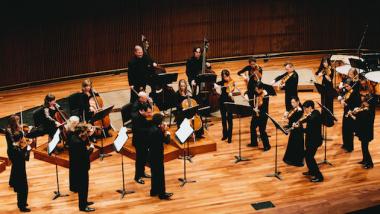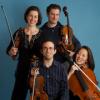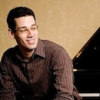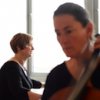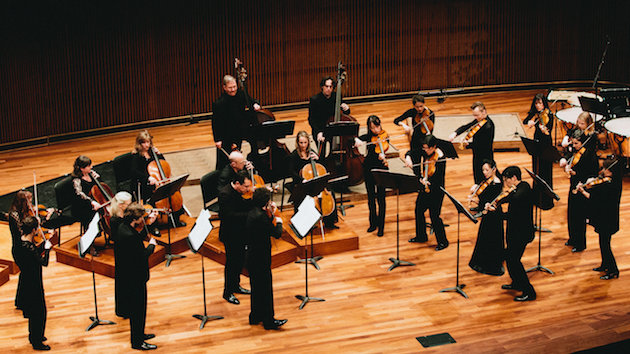
In his five piano concertos, Beethoven assimilated tradition while exerting his own formidable influence on the genre. This weekend, Cal Performances presented three programs by the Saint Paul Chamber Orchestra and pianist Jonathan Biss. Each featured a new composition from SPCO’s Beethoven/5 project, which commissioned five new concertos. Each new work draws inspiration from one of Beethoven’s five.
On Saturday at Berkeley’s Zellerbach Hall, the musicians premiered Salvatore Sciarrino’s Il sogno di Stradella (The dream of Stradella) and also performed its companion piece, Beethoven’s fourth piano concerto. Two additional works by Haydn and Ives resonated with the theme of turning to tradition to spur innovation.
When Haydn wrote his Symphony No. 49 in the late 1760s, certain symphonic characteristics were in vogue. The outer movements were usually fast, for example, whereas the second was slow. But Haydn’s symphony harkened to an older trend of placing the slowest movement first and making subsequent ones progressively faster. The dramatic, mercurial, emotive vibe of this F-minor work, meanwhile, arguably adumbrates Beethoven’s “C-minor mood” or Sturm und Drang (storm and stress) style. From his chair and with his bow, concertmaster Steven Copes led a disciplined, shrewd performance.
The title of Sciarrino’s Il sogno di Stradella refers to Alessandro Stradella, an Italian Baroque composer. Conductor Joshua Weilerstein understands Il sogno to subsume three sections, with the outer two transporting listeners to Stradella’s time and back. The middle amounts to a piece that Stradella might have composed, albeit mediated by some strange — not to mention thick and sound-dampening – looking glass.
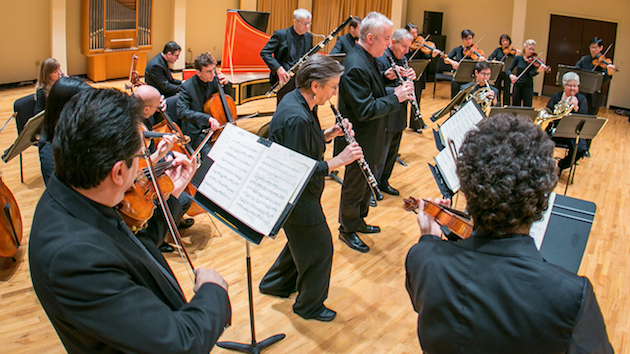
Weilerstein also explained that Sciarrino focuses more on differences than on similarities between his piece and Beethoven’s. For example, Beethoven’s concerto is instantly recognizable because it breaks with convention by starting with a melody played by the soloist. By contrast, — and between pizzicato strings falling like footsteps and discordant tremolos in the winds – Biss appeared only in ephemeral, muted blurbs at the start of Il sogno.
This was intentional. Sciarrino wrote that “the soloist withdraws, denies his usual superiority, to reaffirm it on other levels.” Biss did eventually emerge to play a clear — if unassuming — melody. But soft, sustained string harmonics intentionally veiled it. Eventually the winds picked up some motives from the piano, and there was some development. After what sounded like a deliberately failed climax or cadence and a few meek bass thumps, the piece ended rather like it began: with wind tremolos returning and the soloist again retreating.
Sciarrino describes his work like this: “Not a concerto of sounds, but of resonances, near and distant.” He also wrote that music can “emanate” silence. An earlier composer who also tried to represent silence musically was Charles Ives. In his well-known The Unanswered Question on Saturday, continuous string chords represented “The Silence of the Druids, who know, see, and hear nothing.” The winds, by contrast, spurted increasingly cacophonous or exasperated responses to an offstage solo trumpet. The trumpet played the same idea — “The Perennial Question of Existence” — several times. After the trumpet’s last utterance, the nonsensical winds didn’t even try to respond.
Although Unanswered Question was well-performed, Biss initially confused people because, even though this piece does not have a piano part, he came out on stage for it. Doing so enabled Beethoven’s concerto to ensue without pause.
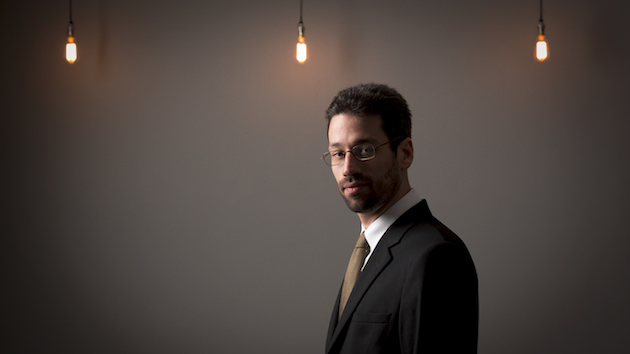
At almost every turn, Beethoven meant for the formal and harmonic structure of his piece to surprise listeners familiar with conventions. These days, Beethoven’s concerto is too familiar to surprise, but Biss’s crystalline technique still dazzled. And working with Weilerstein, the ensemble underscored Beethoven’s breaks with tradition while, at times, recapitulating the Sturm und Drang affect of Haydn’s symphony.
Blending Unanswered Question into Beethoven’s concerto worked musically because Ives ended his piece with strings playing G-major chords. They not only represent silence, but also faded into actual silence. Then, Beethoven’s concerto seamlessly started in the same key. But it also worked philosophically, suggesting the vague existential questioning that ultimately goes unanswered (or met with quiet nihilism) in Unanswered Question might be answered differently. And like this entire program, the juxtaposition suggested that – even if present circumstances fail to provide answers – the past remains replete with inspiration.

